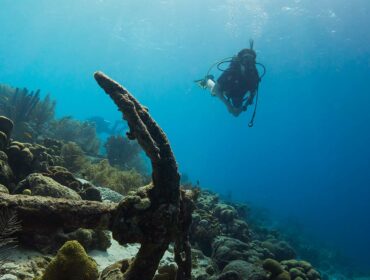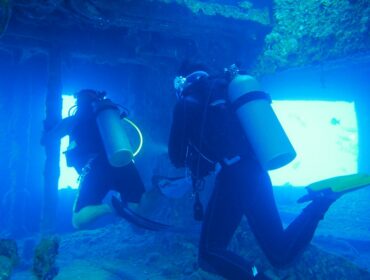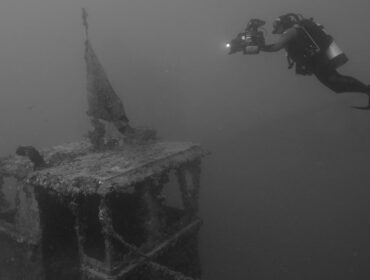At the mention Belize Scuba diving and as a diving destination everyone talks about the Blue Hole Diving, but there’s a lot more to this diving hotspot that just that. The Barrier Reef around Belize is 185 meandering miles (298 km) of unspoiled beauty. It varies from 8 to 16 miles (13-26 km) from the mainland to less than one mile (1.6 km) offshore from Ambergris Caye. Belize even has three atolls with more than 160 miles of walls and reefs suitable for diving. With divers flocking to the blue hole’s Lighthouse reef, the rest are secluded unspoiled and untouched, a far cry from the major dive centers and other popular marine life destinations of the Caribbean.
The Barrier Reef
The barrier reef of Belize is the longest and largest mass of continuous living coral in the hemisphere & second in the world. It’s a UNESCO site of 350 miles that spreads right from the northeast tip of the Yucatan Peninsula in Mexico to Sapodilla Cay southwest of Placencia. Almost 90% of this massive reef and countless potential dive sites remain yet to be explored.
Ambergris Caye
The Ambergris Caye is easily the most popular attraction for divers,mostly for the easy accessibility to the popular lighthouse reef. Almost the entire length of Ambergris Caye the reef comprises of spectacular three dimensional coral formations which include canyons, grottoes and tunnels. It’s also popular for it’s spectacular wall diving. There’s even a 5 square mile National Underwater Wildlife Sanctuary called Hol Chan Marine reserve. Protected from anchor damage, the underwater park features a thirty foot deep channel of coral grottoes and caves. Hol Chan is active with spotted eagle rays, moray eels, yellowtail snapper, parrotfish, and a host of other tropical fish, making it very popular among snorkelers and divers. With more dive sites than you can count and an astounding array of marine life on offer like Nassau Groupers, Angel Fish, Lobsters, Stone Crabs, Morray Eels and Rays, Ambergris Caye is a must dive destination for scuba lovers.
The reef immediately east of San Pedro, the main town on Ambergris Caye, is well known for its great variety of coral. Hard and soft coral like gorgonian sea fans cover the seascape abundantly. Tres cocos, Tackle box canyon, Cypress canyons, Victoria tunnels and rocky point are some of the dive sites on offer in the Ambergris Caye.
Turneffe Islands
Turneffe Islands is the largest of the three atolls of Belize and the only one with an extensive cover of mangroves. Current and walls make the diving here challenging but great for finding large pelagics. Dur to the depths and distance from the mainland of Belize, diving in this region offers excellent underwater visibility, normally in excess of 100 feet and often ranging up to 150 feet. There are also more than 200 mangrove islands here making this atoll a natural nursery for a wide variety of exotic fish, including the rare Whitespotted Toadfish, which is endemic to Belize. Other types of tropical marine life commonly viewed include eagle rays, playful dolphins, turtles, huge green morays, giant jewfish, nurse sharks, reef sharks, trunkfish, grouper, snapper, permit, and horse-eye jacks.
Of it’s numerous dive sites, ‘The Elbow’ is our pick for the best dive to see large fish and pelagics. Located at the very southern end of the atoll The Elbow is quite different from its neighboring Lighthouse Reef. Here, the reef reverses its direction exposing it to the deep and a confluence of opposing ocean currents bathes the 3,000-foot drop in nutrient-rich water, supporting a cavalcade of marine life. Soft corals drape the vertical ledge interspersed by barrel sponges and patrolled by large predatory fish like jacks, snapper and permit. Seasonal appearances of sharks and kingfish add to the pelagic spectacle, but most spectacular is the majestic flight of eagle rays. On exceptional days a school of more than 50 eagle rays can bring a sensation of euphoria to even the most jaded and experienced diver.




